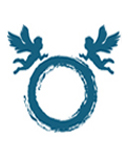Immigrant integration in the UK: the Nepalese way |
Humble Nepalese initiative turns into a role model
In his first speech as prime minister on radicalization and the causes of terrorism, David Cameron criticized ‘state multiculturalism. He backs a policy of ‘muscular liberalism’ to enforce the values of equality.
Muslims remain in the eye of storm like some other countries of Europe. In the words of Conservative co-chairperson Baroness Sayeeda Warsi and first Muslim cabinet member in the UK, Islamophobia has ‘passed the dinner-table test’ and become socially acceptable.
Not just the Muslims but other immigrant nations with non-European culture and lifestyles too face difficulties in assimilating with the British culture. Nepalese immigrants are known for their low-profile existence but challenges of integration in their found home have changed their profile.
Arjun Basnet is member of this small minority group in the United Kingdom, which numbers around 100,000 across the country. He founded Greater Reading Nepalese Community Association (GRNCA), London, with the aim to promote cross-cultural understanding through various activities including sports, religious events and festivals.
Basnet, recalling establishment of the GRNCA with a dozen of his colleagues, says: “Identity strikes first, so we decided to be united in the name of our own motherland - Nepal and formed Nepalese community a decade ago.”
Nepal, officially the Federal Democratic Republic of Nepal, is a landlocked sovereign state located in the Himalayas bordering China and India. Many Nepalese do not distinguish between Hinduism and Buddhism and follow both religious traditions. The country has the world’s only national flag that is non-quadrilateral in shape.
When the GRNCA committee was formed, there were only a handful of people so that they could meet, eat and drink together in a house during festivals.
Within a few years’ time, the association membership grew to over 5,000 in Reading area, which is a complex multi-cultural community mainly comprising Indians, Pakistanis, Nepalese, Afro-Caribbean and Polish.

















 Chiranjibi Paudyal is Nepalese journalist, working as a freelance journalist in the United Kingdom. Besides being editor of the National News Agency, Nepal (1993-2004), he has been a correspondent for the American Reporter and Associated Press till 2005. He also strings for United News of India (UNI) from London. Paudyal is well-travelled with extensive experience of reporting about various cultures.
Chiranjibi Paudyal is Nepalese journalist, working as a freelance journalist in the United Kingdom. Besides being editor of the National News Agency, Nepal (1993-2004), he has been a correspondent for the American Reporter and Associated Press till 2005. He also strings for United News of India (UNI) from London. Paudyal is well-travelled with extensive experience of reporting about various cultures.
Post new comment